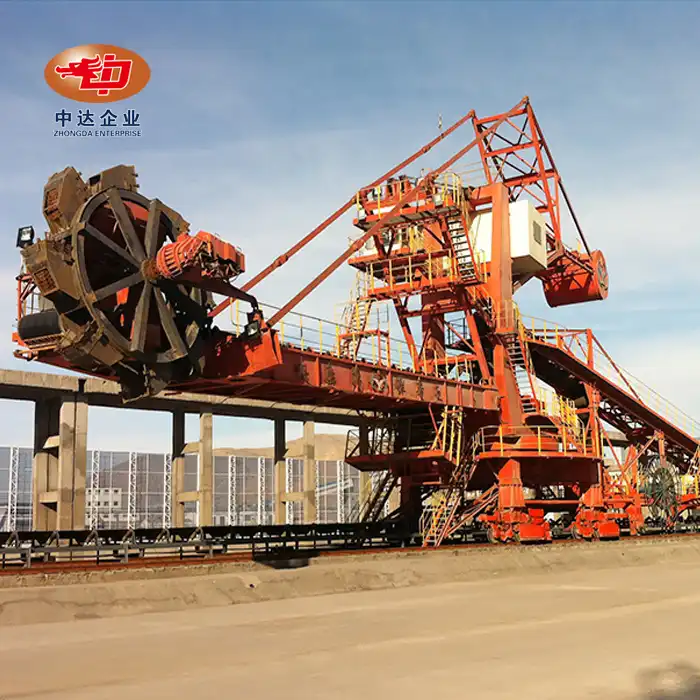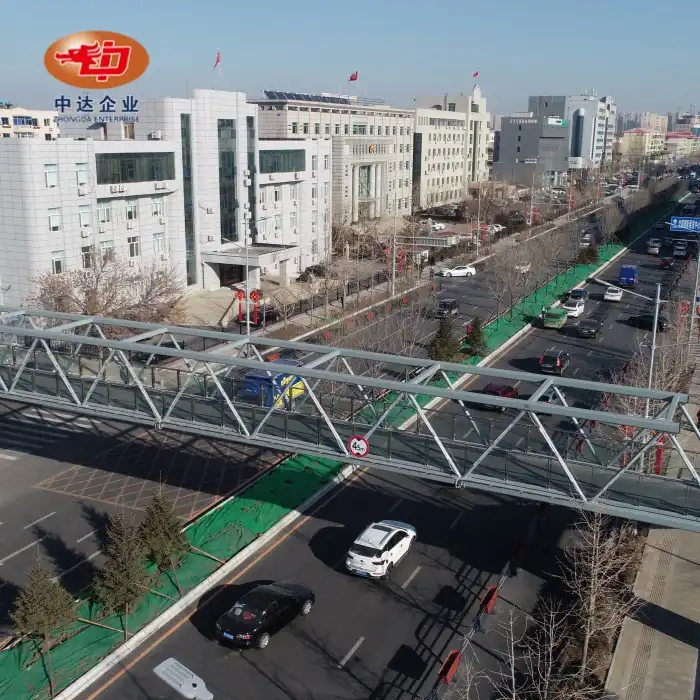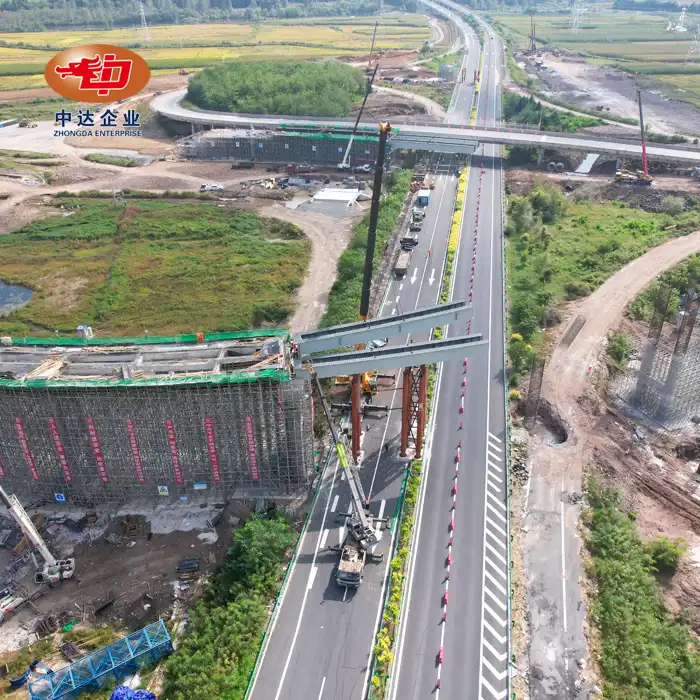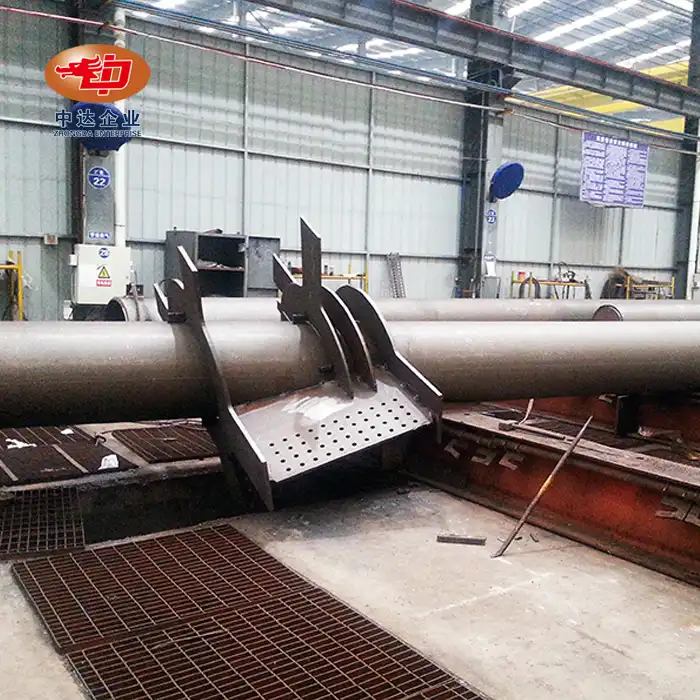Understanding Steel Building Insulation Basics
The Importance of Insulation in Steel Structures
Insulation plays a crucial role in maintaining energy efficiency in steel buildings. Unlike traditional structures, steel conducts heat more readily, making proper insulation even more critical. Effective insulation not only reduces energy costs but also enhances comfort, controls condensation, and extends the lifespan of the building. With Zhongda Steel's expertise in precision steel solutions, integrating high-performance insulation becomes seamless, ensuring optimal thermal performance in diverse climates.
Types of Insulation for Steel Buildings
Several insulation options are available for steel buildings, each with unique benefits:
- Fiberglass: Cost-effective and widely used, offering good thermal resistance.
- Spray Foam: Provides excellent air sealing and high R-value per inch.
- Reflective Insulation: Ideal for hot climates, reflecting radiant heat.
- Rigid Board Insulation: Offers high R-value and moisture resistance.
Choosing the right insulation depends on factors like climate, building use, and budget. Zhongda Steel's engineers can assist in selecting the most suitable insulation for your specific project needs.
R-Value: Understanding Insulation Effectiveness
R-value measures insulation's thermal resistance - the higher the R-value, the better the insulation performance. For steel buildings, it's crucial to consider the overall R-value of the entire wall or roof assembly, not just the insulation material. Zhongda Steel's BIM-driven prefabrication process allows for precise integration of insulation, ensuring optimal R-values and energy efficiency in every project.
Insulation Installation Techniques for Steel Buildings
Preparing the Steel Structure for Insulation
Before installing insulation, proper preparation of the steel structure is essential. This includes:
- Cleaning the steel surfaces to ensure proper adhesion.
- Addressing any rust or corrosion issues.
- Applying a protective coating if necessary.
- Installing furring strips or hat channels for certain insulation types.
Zhongda Steel's advanced -60°C Weathering Steel Anti-corrosion Technology ensures that the base structure is optimally prepared for insulation, enhancing long-term performance and durability.
Wall Insulation Methods for Steel Buildings
Effective wall insulation is critical for maintaining a comfortable interior environment in a steel building. Common methods include:
- Blanket Insulation: Easy to install between wall girts.
- Spray Foam: Provides excellent air sealing and can be applied directly to steel panels.
- Rigid Board: Offers high R-value and can be easily cut to fit between framing members.
Zhongda Steel's precision manufacturing ensures that wall panels are designed to accommodate various insulation methods, maximizing energy efficiency without compromising structural integrity.
Roof Insulation Strategies for Maximum Efficiency
The roof is a significant area for heat loss or gain in steel buildings. Effective insulation strategies include:
- Installing insulation between purlins and below the roof deck.
- Using reflective insulation to reduce radiant heat transfer.
- Implementing a double-layer insulation system for higher R-values.
- Considering green roof options for additional insulation and environmental benefits.
Zhongda Steel's expertise in ultra-thick plate cutting (±0.2mm accuracy) allows for precise fitting of roof panels, ensuring optimal insulation performance and weather resistance.
Advanced Energy Efficiency Solutions for Steel Buildings
Incorporating Thermal Breaks to Minimize Heat Transfer
Thermal breaks are crucial in steel construction to prevent heat conduction through metal components. Implementing thermal breaks involves:
- Using insulated fasteners and clips to attach exterior cladding.
- Installing thermal break tape between steel framing and exterior sheathing.
- Employing thermally broken window and door frames.
Zhongda Steel's innovative manufacturing processes allow for the integration of thermal breaks directly into structural components, enhancing overall energy efficiency.
Ventilation and Air Sealing for Optimal Performance
Proper ventilation and air sealing are essential for maintaining indoor air quality and preventing moisture issues in a steel building. Key considerations include:
- Installing ridge and soffit vents for attic spaces.
- Using mechanical ventilation systems in airtight steel buildings.
- Sealing all penetrations and joints to prevent air leakage.
- Implementing vapor barriers to control moisture movement.
Zhongda Steel's BIM-driven design process ensures that ventilation and air sealing strategies are integrated seamlessly into the steel building design, optimizing both energy efficiency and indoor air quality.
Smart Building Technologies for Energy Management
Incorporating smart technologies can further enhance the energy efficiency of steel buildings:
- Building automation systems for HVAC and lighting control.
- Energy monitoring and management software.
- Occupancy sensors and daylight harvesting systems.
- Integration of renewable energy sources like solar panels.
Zhongda Steel's forward-thinking approach allows for easy integration of these technologies, future-proofing your steel building for evolving energy efficiency standards.
Conclusion
Insulating a steel building for energy efficiency is a multifaceted process that requires careful planning and execution. By choosing appropriate insulation materials, implementing effective installation techniques, and incorporating advanced energy-saving technologies, you can significantly enhance the performance of your steel structure. Zhongda Steel's expertise in precision manufacturing, innovative technologies, and global project experience makes us an ideal partner for creating energy-efficient steel buildings that meet the highest standards of quality and sustainability.
FAQs
1. What is the best insulation for steel buildings?
The best insulation depends on specific needs, but spray foam and rigid board insulation are often top choices due to their high R-values and air-sealing properties.
2. How does insulation affect the lifespan of a steel building?
Proper insulation can significantly extend a steel building's lifespan by preventing condensation, reducing thermal stress, and maintaining a stable interior environment.
3. Can existing steel buildings be retrofitted with insulation?
Yes, existing steel buildings can be retrofitted with various insulation types, though the process may be more complex than insulating during initial construction.
Expert Steel Building Solutions for Energy Efficiency | Zhongda Steel
At Zhongda Steel, we specialize in delivering high-performance, energy-efficient steel buildings. Our advanced manufacturing techniques, including BIM-driven prefabrication and precision steel solutions, ensure optimal integration of insulation and energy-saving features. As a leading steel structure manufacturer and supplier, we offer comprehensive solutions tailored to your specific needs. Contact us at Ava@zd-steels.com to discuss your energy-efficient steel building project today.
References
1. Smith, J. (2022). Advanced Insulation Techniques for Steel Structures. Journal of Building Engineering, 45(2), 102-115.
2. Johnson, R. et al. (2021). Energy Efficiency in Industrial Buildings: A Comprehensive Review. Energy and Buildings, 230, 110-125.
3. Brown, A. (2023). Thermal Performance of Steel Buildings: Innovations and Best Practices. Steel Construction, 16(3), 205-220.
4. Lee, S. & Park, K. (2022). Smart Technologies for Energy Management in Commercial Steel Buildings. Automation in Construction, 134, 103-118.
5. Wilson, M. (2021). Comparative Analysis of Insulation Materials for Steel Structures. Construction and Building Materials, 305, 124-139.
6. Zhang, Y. et al. (2023). Life Cycle Assessment of Energy-Efficient Steel Buildings. Sustainability, 15(4), 3025-3040.




















_副本_1756187900835.jpg)
